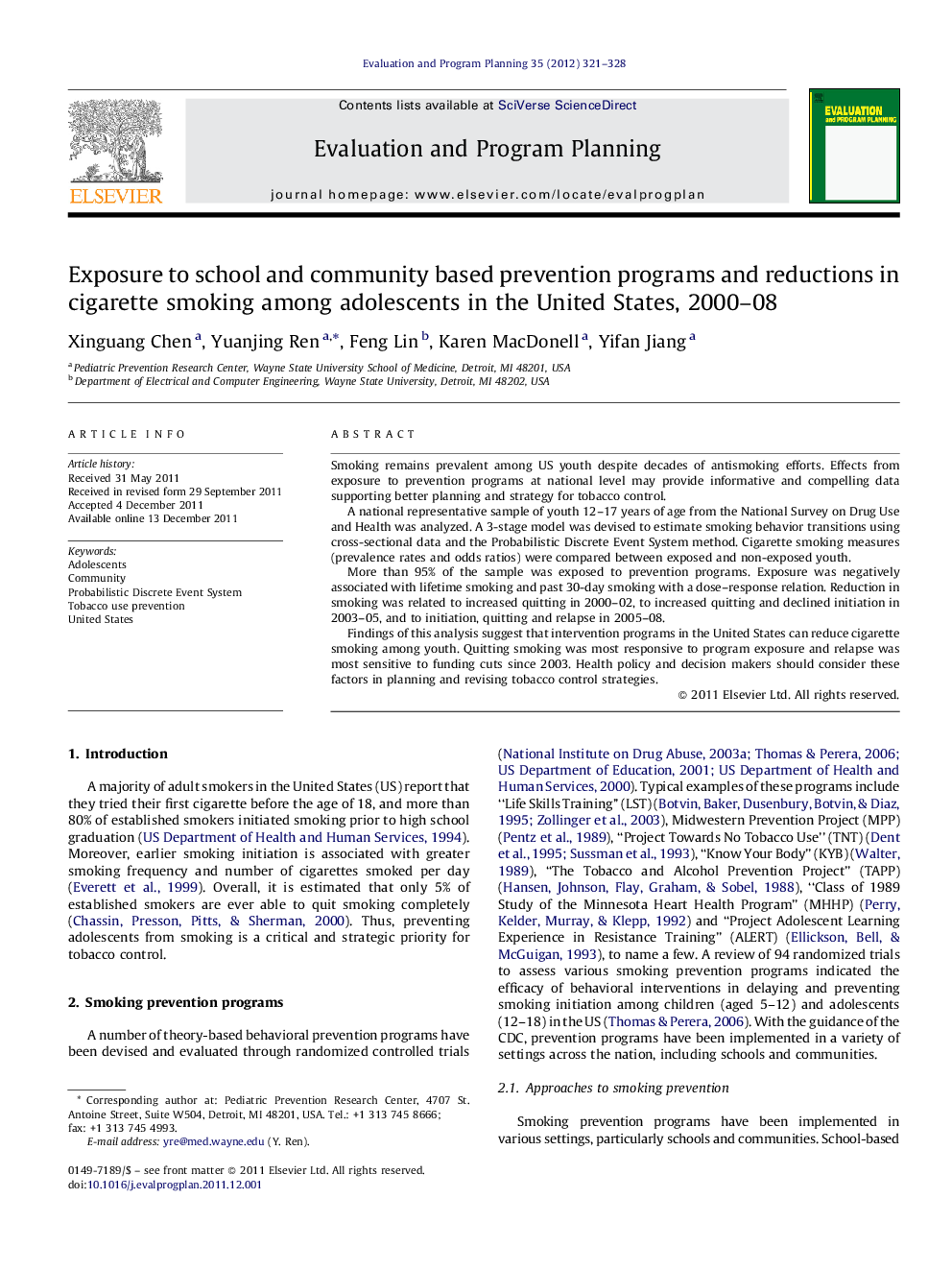| Article ID | Journal | Published Year | Pages | File Type |
|---|---|---|---|---|
| 322278 | Evaluation and Program Planning | 2012 | 8 Pages |
Smoking remains prevalent among US youth despite decades of antismoking efforts. Effects from exposure to prevention programs at national level may provide informative and compelling data supporting better planning and strategy for tobacco control.A national representative sample of youth 12–17 years of age from the National Survey on Drug Use and Health was analyzed. A 3-stage model was devised to estimate smoking behavior transitions using cross-sectional data and the Probabilistic Discrete Event System method. Cigarette smoking measures (prevalence rates and odds ratios) were compared between exposed and non-exposed youth.More than 95% of the sample was exposed to prevention programs. Exposure was negatively associated with lifetime smoking and past 30-day smoking with a dose–response relation. Reduction in smoking was related to increased quitting in 2000–02, to increased quitting and declined initiation in 2003–05, and to initiation, quitting and relapse in 2005–08.Findings of this analysis suggest that intervention programs in the United States can reduce cigarette smoking among youth. Quitting smoking was most responsive to program exposure and relapse was most sensitive to funding cuts since 2003. Health policy and decision makers should consider these factors in planning and revising tobacco control strategies.
